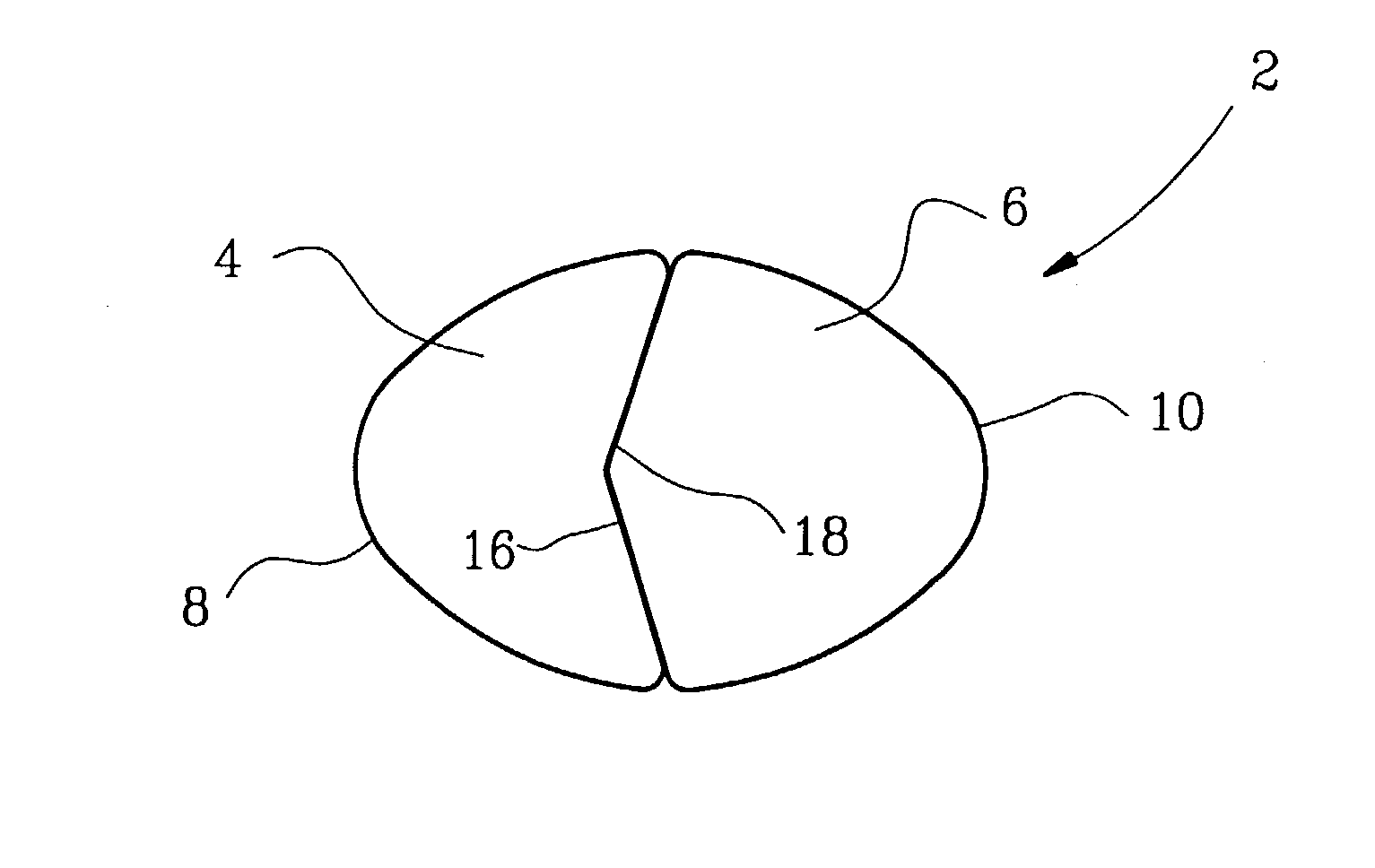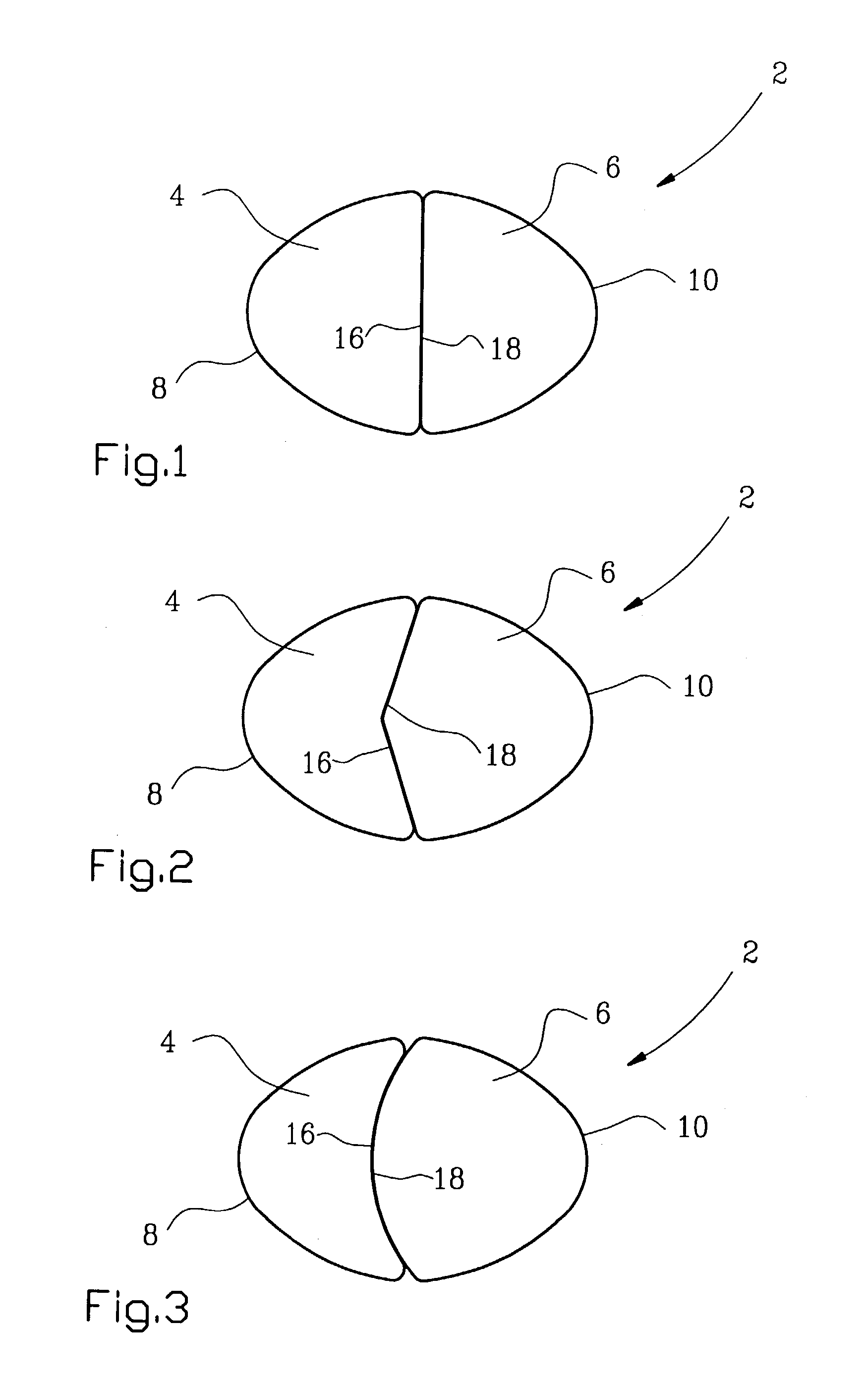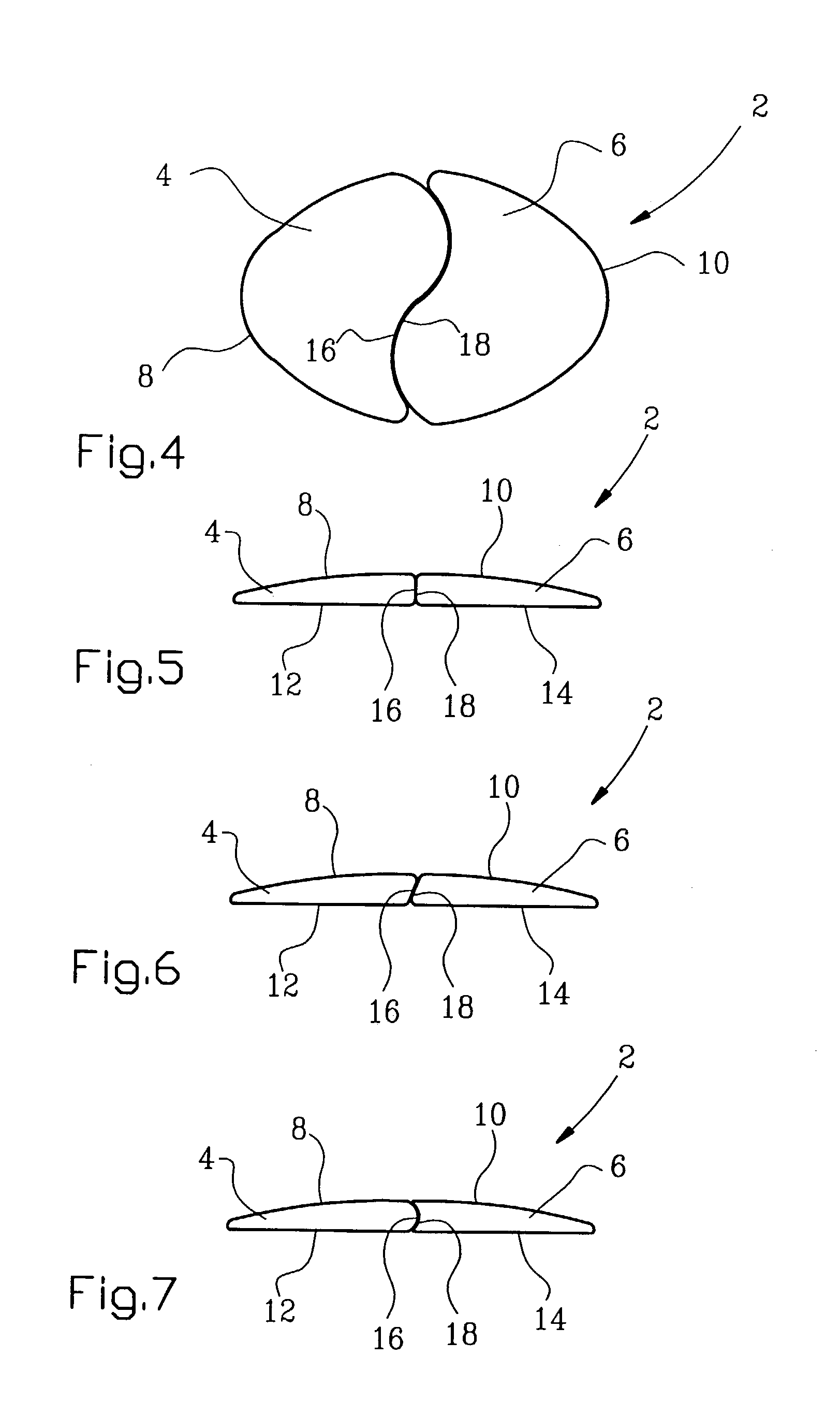Orthodontic retainer elements
a retainer and orthodontic technology, applied in dentistry, medical science, dental tools, etc., can solve the problems of inaccurate retainer plates, easy to break easily, limited tooth setting must be counted, etc., to achieve strong bonding, greater together pulling force, and stable effect on each other
- Summary
- Abstract
- Description
- Claims
- Application Information
AI Technical Summary
Benefits of technology
Problems solved by technology
Method used
Image
Examples
Embodiment Construction
[0040] Equipment and / or arrangement for dental treatment not concerning the invention itself directly, but otherwise being necessary for practicing the invention, is not specified any further or described in further detail in the following exemplary embodiment.
[0041] A pair 2 of retainer elements is formed of a retainer element 4 and a retainer element 6, cooperative in the position of use. Each retainer element 4 and 6 is formed of an outer surface, 8 and 10, respectively, and a basal surface, 12 and 14, respectively, and of a so-called retainer approximal surface 16 and a complementarily shaped retainer approximal surface 18. Correspondingly, a pair of adjacent teeth, a tooth 20 and 22, respectively, is formed of one tooth approximal surface 24 and one adjacent tooth approximal surface 26 and dental attachment surfaces, 28 and 30, respectively, the teeth being anchored in the connective tissues 32 of the tooth jaw. The retainer elements 4 and 6 are positioned and secured / glued to ...
PUM
 Login to View More
Login to View More Abstract
Description
Claims
Application Information
 Login to View More
Login to View More - R&D
- Intellectual Property
- Life Sciences
- Materials
- Tech Scout
- Unparalleled Data Quality
- Higher Quality Content
- 60% Fewer Hallucinations
Browse by: Latest US Patents, China's latest patents, Technical Efficacy Thesaurus, Application Domain, Technology Topic, Popular Technical Reports.
© 2025 PatSnap. All rights reserved.Legal|Privacy policy|Modern Slavery Act Transparency Statement|Sitemap|About US| Contact US: help@patsnap.com



